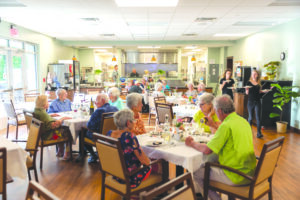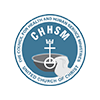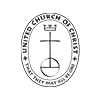United Church Homes’ Commitment to Culture Change
What jumps into your mind when you hear the words nursing home? Think about it. Did you picture a bright, friendly place, where staff and neighbors are like family? Did you envision an open floor plan and sun-filled community gathering spaces? Chances are, your idea of a nursing home is vastly different.
Culture Change and Person-Directed Care
As a national leader in senior living, United Church Homes has transformed its communities into warm, welcoming and life affirming homes for thousands of older adults. The reason? Culture change.

Uplands Village, a United Church Homes-managed community in Pleasant Hill, Tennessee
A few years ago, United Church Homes began looking at the Pioneer Network as a source of inspiration. The basic principle that incites culture change is moving from provider-directed to person-directed care. And yes, that’s exactly as simple as it sounds — from staff choosing residents’ food and schedules to residents making their own choices, with staff adapting to residents’ wants and needs. While it’s not a complex idea, moving to person-directed care can have a profound and positive effect on the well-being of older adults living in long-term and short-term care communities.
Creating Home
With person-directed care in mind, UCH wanted its communities to be where older adults would choose to live. What does that change look like? Home isn’t necessarily the newest and shiniest place to be. Rather, it’s where an individual feels comfortable, at peace and safe.
It’s where you are surrounded by a community of extended family who make life meaningful. So, in each United Church Homes community, we strive to create that environment — every day.
Many of our buildings were older, designed as institutions — more hospital than home. Over the past decade, we’ve converted those hallways to neighborhoods and transformed units to households. We didn’t just alter the language, though that remains incredibly important. We created elements in each community that mirror home — dining rooms where residents eat together, sharing a meal and conversation; gathering spaces, indoors and out, where residents can meet their friends and families to play games, go for walks or just catch up; and areas where residents can experience UCH’s one-of- a-kind community life — activities and events chosen, and often led, by residents.
Nearly every owned and managed United Church Homes community has adapted this type of environment. From memory care neighborhoods to skilled nursing households, United Church Homes has followed the Pioneer Network’s ideals and turned hallways into homes.
Pilgrim Manor — A Classic Example
Pilgrim Manor is one of the newer members of the United Church Homes family, joining in 2016. Its roots trace back to 1955 when a dozen local Congregational churches (now mostly United Church of Christ) banded together to create a place for older adults to live. With its beautiful 10-acre setting in the heart of Grand Rapids, Michigan, Pilgrim Manor was the perfect place to implement this environment. The view from nearly every window gives residents a glimpse of deer, rabbits and birds and the changing seasons and offers plenty of natural light.

Pilgrim Manor, a United Church Homes assisted living and skilled nursing community in Grand Rapids, Michigan
Community Life Director Jennifer Raymond and the Pilgrim Manor Culture Change Team embraced the idea. They set up displays in what was then called Health Center and HFA (now the Woods and Groves neighborhoods). Family, residents and staff offered their ideas, and the culture change team compiled the results. They came up with names to suit Pilgrim Manor’s unique setting — Forest Grove and Valley Grove, for instance — beautiful names reminiscent of the views.
“Each name has a special meaning as to where it’s located on the property,” Jennifer said. “Living in a neighborhood creates a sense of community and makes this place their home.”
Springtime at Pilgrim Manor
Now it’s spring at Pilgrim Manor. Residents discuss their children and grandchildren. A resident wearing a mask is talking to the chaplain about the upcoming service — which may be viewed through Zoom or Facebook Live but will take place nonetheless. The many flowers of the community have begun to bloom, adding to the environment and offering hope as we fight COVID-19.
And except for the assisted living area completed in 2018, Pilgrim Manor isn’t new.
It’s something else — something better — it’s home.
View all articles by:























